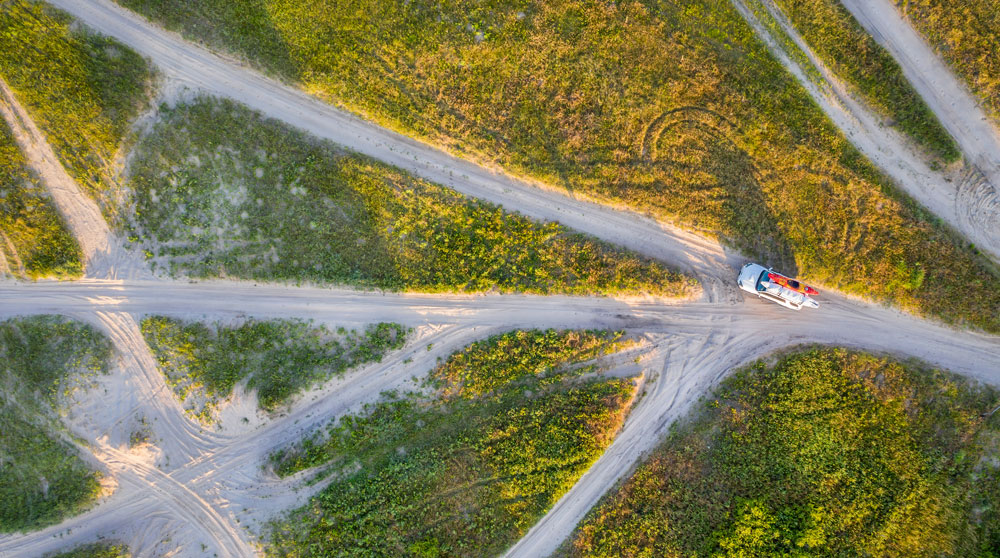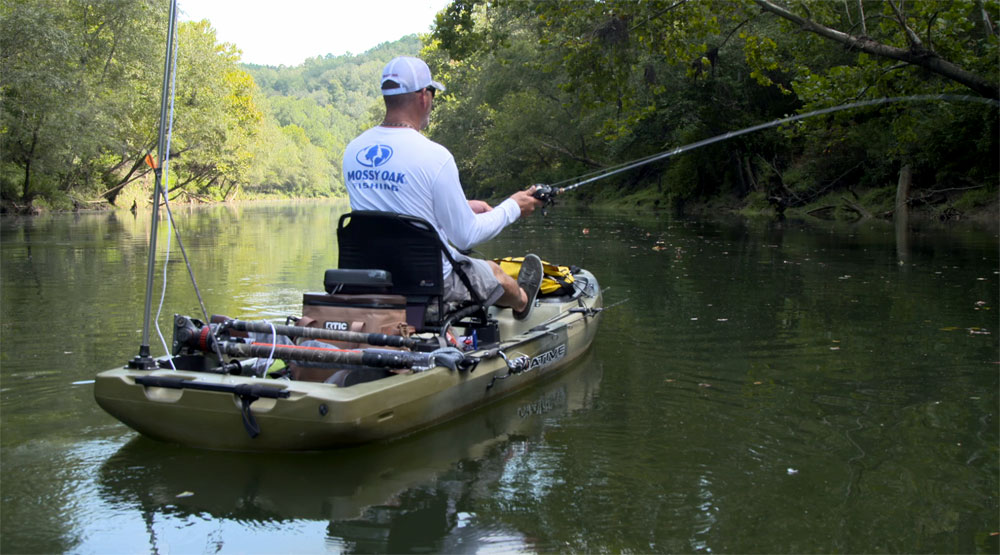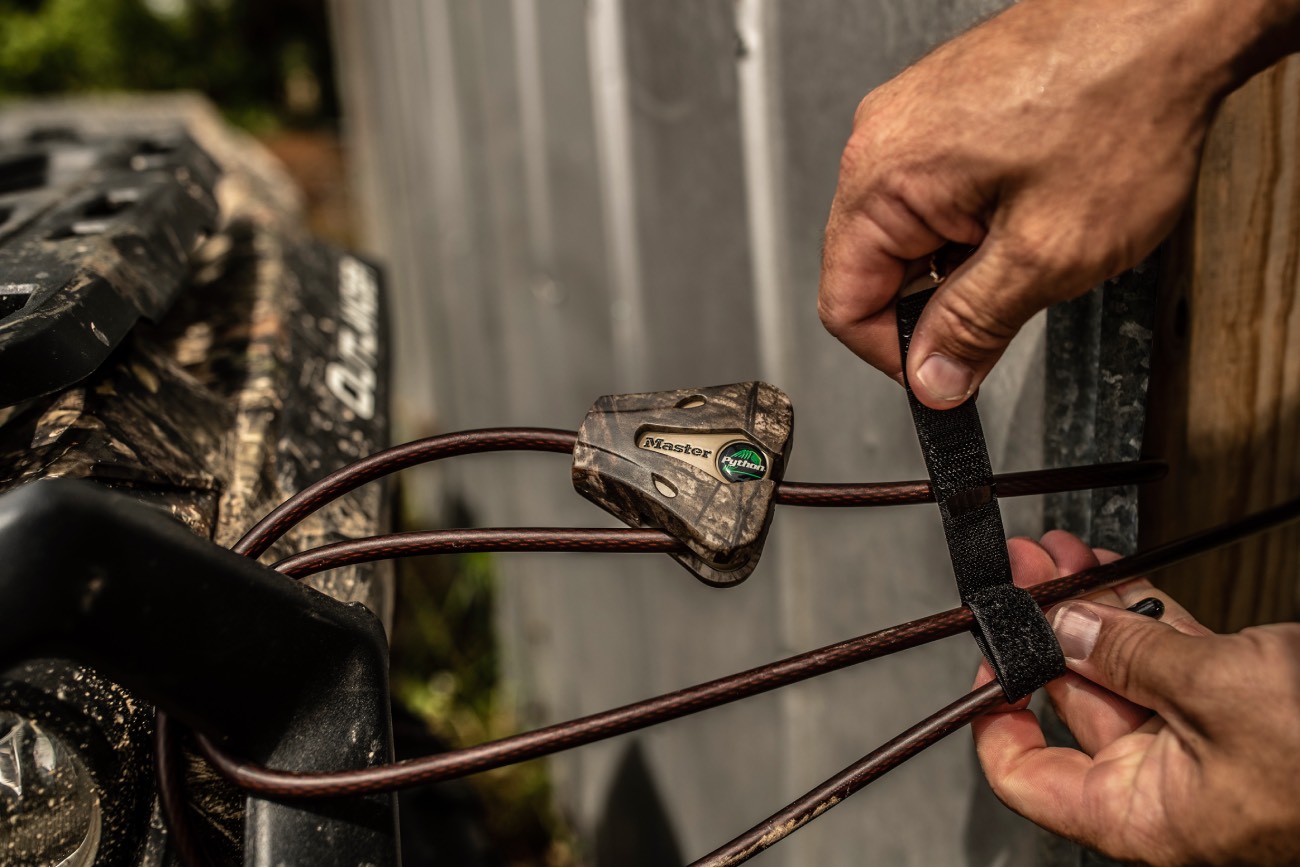Kayaking is a truly unique way to travel. For whatever reason–maybe it’s how low you sit to the water or the way the kayak quietly slides through the water–you can get closer to wildlife in a kayak. You can explore hidden waterways, paddle up small streams and weave through flooded saplings or otherworldy mangroves.

That all sounds beautiful, but perhaps you’re wondering how to travel with your kayak. Here are nine tips to help you with the not-so-magical side of kayak transport and hopefully get you out on the water faster.
1. You can strap almost anything down, but make sure it’s legal
With the right number of cargo ratchet straps and appropriately applied tension, you can MacGyver your way through pretty much any kayak transportation scenario. However, before you stack your car three kayaks high, just check your state’s laws on boat transportation or their laws on car-top transportation.
2. How to tie down a kayak
If possible and in your budget, buy cargo tie-down straps designed for recreational or kayak transport purposes. Here are some recommendations for strapping your boat or boats down:
- Always use at least two ratchet straps.
- If you have two or more boats, use at least three straps.
- Secure the center of the first boat to the top of your vehicle with a strap to provide a solid base. Stack the rest of the boats on top of or next to this first boat.
- Stacking boats sidewise makes for better clearance. However, it is also more challenging to stack boats this way on a simple crossbar system and without kayak-specific roof mounts. You will need someone on the other side of the car to hold the boats in place while you strap them down.
- Whenever using cargo straps, space the top two straps out by at least three feet. This will help keep your boats safe.
- Follow any cargo strap manufacturer guidelines and tighten straps down so they will not loosen while driving.
- Don’t tighten straps so much that you dent your boat.
3. Transporting kayaks on a budget
Strapping kayaks to a car roof is possible, though not entirely recommended, even without a roof rack or a cartop carrying system. Lay down a drop cloth or padding on top of the roof to prevent scuffing or scraping and simply strap the boats down to the roof of the car. Shut the car doors over the cargo straps and you have an incredibly cheap way to carry your boats. This is best for short distances and not recommended for longer trips.

If you have simple rooftop crossbars, kayak transport will be easier for you and safer for your car. Just remember that stacking kayaks on a car and holding them in place while you secure your cargo straps is usually a two-person job. If you have a truck with a long bed, your job is even easier: just strap your kayaks into the base of your truck bed.
4. Consider kayak covers
To protect your kayaks on longer journeys, consider investing in kayak covers. This will keep any road debris such as gravel, rocks or rubber from damaging your boats.
5. The easier, more expensive ways
There are a number of products available on the market that can help you transport your kayak more easily. This might be a worthwhile investment if you’re considering traveling a long distance with your kayaks–perhaps you’re going on a hunting and kayaking road trip and want to optimize storage space.
For example, if you’re wondering how to transport a kayak when you already have your camping gear in a car-top carrier, consider a tow-behind kayak trailer. These are designed to help you maximize space. There are also a number of other rooftop, kayak-specific racks and padding systems to consider.
6. Load and unload with care
Load and unload your kayaks with care and, if possible, with a two-person team. Have one person positioned at each end of the kayak when both lifting the boat overhead or unloading the boat from the top of the car.
7. Kayaking on your own
It’s entirely possible to load your boat on top of your car by yourself, as long as you are reasonably tall and are in good physical shape.
Set the nose of your kayak on the back of your car roof, with the tail of the kayak on the ground. Then, walk to the back of your kayak and push from behind to slide your boat on top of your car. Make sure you don’t hit any car roof features, like an antenna.
When your boat is well-centered and balanced on top of your vehicle, toss a strap over the roof of your car and tighten your boat down. To unload your boat, simply reverse the process.
8. Invest in a bike lock
If you’re going to be traveling far with your boat, it might be worthwhile to invest in a bike lock. Even if you simply anticipate running into a restaurant and leaving your boat on your car, peace of mind is important. Locking down your boat can help you know your boat is less likely to be stolen.

Additionally, a bike lock allows you to leave your boats in more interesting places. Traveling with bikes as well? For an upstream-downstream bike and kayak trip, lock your boats at a safe location near a launch point upriver. Drive downriver and follow a trail or path back along the water to your boats. Lock up your bikes with the lock and kayak back down to your car. We recommend the Masterlock cable series for peace of mind.
This sort of trip can give you multiple perspectives on the river and its surrounding wildlife and landscapes. If you are considering leaving your boats somewhere for several hours, consider notifying a river authority and lock them well.
HOW TO PROTECT YOUR GEAR FROM THEFT
9. Carrying your boats to and from the water
If you’re kayaking with a friend, “front and back” your boats. Have one person grab the back of both boats and the other grab the front.
If you’re kayaking alone, grab the side of the cockpit closest to you and lift the boat to your knee. Place one hand on the opposite side of the cockpit and then hoist the kayak up so that the cockpit rests on your shoulder. Carry it that way, balancing the boat with your hands.
When lifting, remember to keep your stomach engaged, your back straight and to generate the momentum from your legs and arms rather than your back.
Conclusion
Now that you have all the not-so-picturesque details of how to transport a kayak out of the way, you can spend less time worrying about the pragmatic details and more time enjoying the river, lake or ocean. Remember to lift safely, secure your boat and always make sure you’re driving lawfully, and you are almost sure to have a wonderful time.































